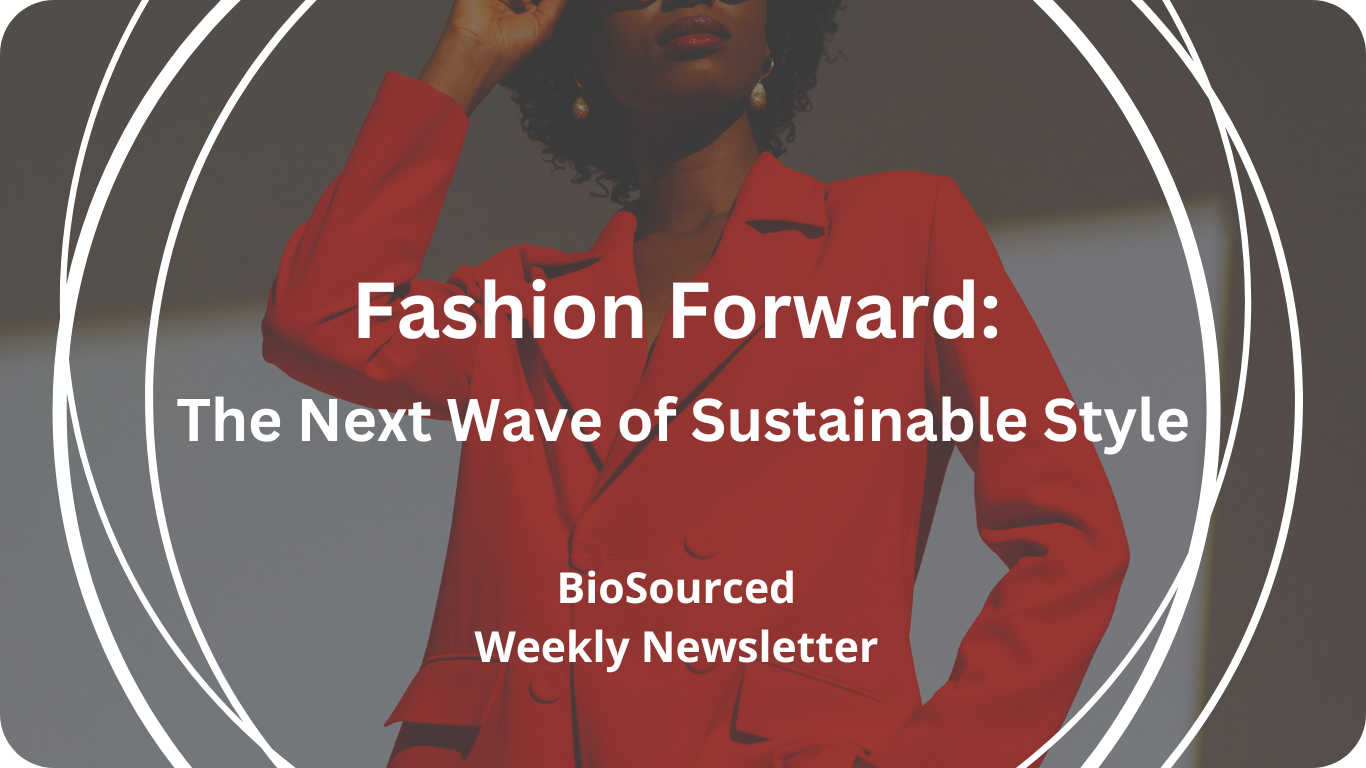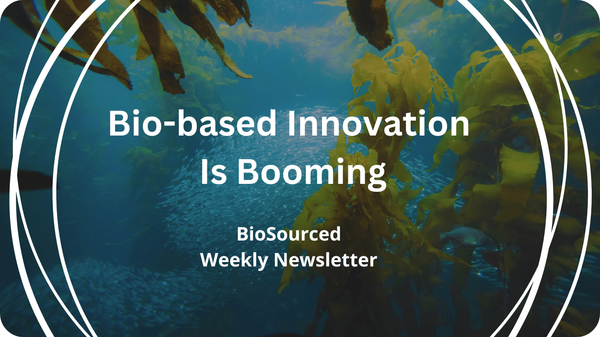Fashion Forward: The Next Wave of Sustainable Style

The fashion industry is at a crossroads. While trends come and go, the environmental impact of our clothing choices lingers for centuries. From water-intensive cotton production to fossil-fuel-derived synthetic fabrics, the industry has long been criticized for its heavy carbon footprint and waste generation. However, a new era of innovation is emerging, where biotech, circularity, and alternative materials are rewriting the rules of fashion. 🌍
What’s new? Let’s dive in! ⬇️
👗New Products
🧵 Brewed Protein: The Next-Gen Sustainable Fiber
Japanese biotech company Spiber has developed Brewed Protein, a lab-grown fiber produced by feeding microorganisms with plant-based materials – with unwanted garments as the next-gen feed lined up. The by-product is then spun into a textile that can be used to create infinitely recyclable clothes.
This innovation offers a sustainable alternative to traditional animal-based fibers and has been adopted by brands like Pangaia, Woolrich, The North Face, and Burberry, which introduced a scarf made with Brewed Protein into its permanent collection.
GOZEN's LUNAFORM set to Scale Biodesign in Fashion
The Turkish biotech startup GOZEN has several reasons to celebrate, including the inauguration of its new facility and the launch of LUNAFORM, an advanced biomaterial created through controlled fermentation of nanocellulose using its proprietary BioCraft technology.
The material boasts fabric-like qualities, including draping cascades, high tensile strength, and versatility—making it a game-changer for circular fashion. With the launch of its new facility, GOZEN is positioning LUNAFORM™ as a serious contender in the sustainable textile market.
More Industry Updates:
- Balenciaga LUNAFORM Maxi Bathrobe Coat retail debut
- Metsä Group's Kuura Textile Fibre Mill Pre-engineering
🎨 Dyes & Pigments
Responsible for heavy water usage and chemical runoff, conventional dyes and pigments are among the fashion industry’s biggest environmental culprits. Thankfully, biobased alternatives are intervening.
🌱 Vision Life Holdings’ Biobased Ink
South Korea-based Vision Life Holdings has introduced UTEX Eco Ink, a water-based ink designed to tackle the dye industry’s wastewater pollution problem head-on. Thanks to its direct printing capacity, this innovative ink eliminates the need for pre- and post-treatment processes, significantly reducing water usage while remaining compatible with traditional methods and all fabric types.
🦠 Debut’s Breakthrough in Carmine Bioproduction
Carmine, an intense red pigment made from cochineal insects, has long been a staple in textiles, food, and cosmetics. But at what cost? Producing just a fifth of a pound of carminic acid requires 70,000 insects, and Peru (the largest producer) accounts for 70 tonnes per year.
The California-based leader in biotech beauty Debut has achieved a significant breakthrough by providing a scalable bio-based carmine alternative made with a new class of enzyme. Their cell-free biomanufactured carmine offers an animal-free, safe, and sustainable alternative with higher purity set to launch in the beauty industry followed by food & beverage.
🔵Patrick McDowell x Huue’s Indigo Capsule Collection
British sustainability-focused designer Patrick McDowell has partnered with biotech company Huue to launch a capsule collection featuring biosynthetic indigo dye. This collaboration showcases the potential of bio-based dyes in fashion, reducing reliance on traditional synthetic dyes and promoting a cleaner, more ethical industry.
👥Community
🔍 bluesign: Setting Sustainability Standards
Swiss-based bluesign is driving strategic transformation in the fashion industry by creating the framework to eliminate hazardous chemicals, optimize resource usage, and foster transparency across supply chains.
Its bluesign SYSTEM consists of a coalition of 800+ partners across various sectors globally joining forces to set benchmarks for safer, more sustainable practices, ensuring worker and consumer safety while reducing environmental impact.
What are the challenges circular fashion faces?
🔗 CMAI’s SU.RE Initiative: A Directory for Sustainable Sourcing
The Clothing Manufacturers Association of India (CMAI) has launched the SU.RE website and Sustainable Supply Chain Directory to promote knowledge-sharing and sustainable sourcing.
While the website serves as a comprehensive platform with educational resources and collaboration opportunities, the directory includes 600+ verified vendors specializing in areas such as fabric manufacturing, recycling, sustainable packaging, and certification services, facilitating responsible sourcing and fostering industry collaborations.
What else is the fashion circle weaving?
📅 Event
🎟️Cellulose Fibres Conference 2025
This conference will spotlight the latest advancements in biosynthetics, recycling, and next-gen sustainable fibres. With over 200 participants expected, it's set to be a major event for textile innovators.
📅 Date: March 12-13, 2025
📍 Location: Cologne, Germany (online options available)
The future of fashion is being rewritten thread by thread, pigment by pigment. As biotech-driven materials hit the market, and innovations like bio-based dyes reshape the color industry, sustainability is becoming more than just a trend—it’s a necessity.
However, the path forward requires more than just material innovation. From regulatory frameworks to waste management and consumer behavior shifts, the fashion industry must undergo a holistic transformation.
With companies, designers, consumers and scientists aligning their ideals, I hope the dream of a truly circular, sustainable fashion ecosystem is as close as business leaders make it out to be.
Are we ready to step into the future's attire sincerely? 👕
Take care,
Nina Purton 🌿





